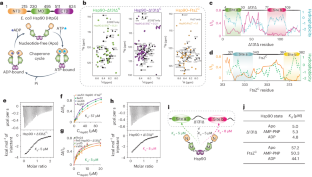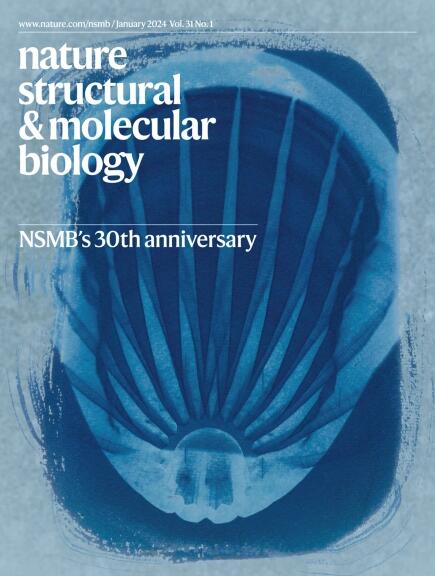Structural basis for the dynamic chaperoning of disordered clients by Hsp90
IF 12.5
1区 生物学
Q1 BIOCHEMISTRY & MOLECULAR BIOLOGY
引用次数: 0
Abstract
Molecular chaperone heat shock protein 90 (Hsp90) is a ubiquitous regulator that fine-tunes and remodels diverse client proteins, exerting profound effects on normal biology and diseases. Unraveling the mechanistic details of Hsp90’s function requires atomic-level insights into its client interactions throughout the adenosine triphosphate-coupled functional cycle. However, the structural details of the initial encounter complex in the chaperone cycle, wherein Hsp90 adopts an open conformation while engaging with the client, remain elusive. Here, using nuclear magnetic resonance spectroscopy, we determined the solution structure of Hsp90 in its open state, bound to a disordered client. Our findings reveal that Hsp90 uses two distinct binding sites, collaborating synergistically to capture discrete hydrophobic segments within client proteins. This bipartite interaction generates a versatile complex that facilitates rapid conformational sampling. Moreover, our investigations spanning various clients and Hsp90 orthologs demonstrate a pervasive mechanism used by Hsp90 orthologs to accommodate the vast array of client proteins. Collectively, our work contributes to establish a unified conceptual and mechanistic framework, elucidating the intricate interplay between Hsp90 and its clients. Here, using nuclear magnetic resonance spectroscopy, the authors delineate how the molecular chaperone Hsp90, in its open state, uses its two middle domains to synergistically capture a disordered client in a highly dynamic manner, forming a bipartite complex.


Hsp90 对无序客户进行动态陪衬的结构基础
分子伴侣热休克蛋白 90(Hsp90)是一种无处不在的调节器,它能微调和重塑各种客户蛋白,对正常生物学和疾病产生深远影响。要揭示 Hsp90 功能的机理细节,就必须从原子层面深入了解它在整个三磷酸腺苷耦合功能周期中与客户的相互作用。然而,伴侣循环中最初相遇复合物的结构细节(Hsp90 在与客户接触时采用开放构象)仍然难以捉摸。在这里,我们利用核磁共振光谱测定了与无序客户结合的 Hsp90 在开放状态下的溶液结构。我们的研究结果表明,Hsp90 使用两个不同的结合位点,协同捕捉客户蛋白中离散的疏水片段。这种双向相互作用产生了一种多功能复合体,有利于快速构象取样。此外,我们对各种客户蛋白和 Hsp90 同源物的研究表明,Hsp90 同源物使用一种普遍的机制来适应大量客户蛋白。总之,我们的工作有助于建立一个统一的概念和机制框架,阐明 Hsp90 及其客户之间错综复杂的相互作用。
本文章由计算机程序翻译,如有差异,请以英文原文为准。
求助全文
约1分钟内获得全文
求助全文
来源期刊

Nature Structural & Molecular Biology
BIOCHEMISTRY & MOLECULAR BIOLOGY-BIOPHYSICS
CiteScore
22.00
自引率
1.80%
发文量
160
审稿时长
3-8 weeks
期刊介绍:
Nature Structural & Molecular Biology is a comprehensive platform that combines structural and molecular research. Our journal focuses on exploring the functional and mechanistic aspects of biological processes, emphasizing how molecular components collaborate to achieve a particular function. While structural data can shed light on these insights, our publication does not require them as a prerequisite.
 求助内容:
求助内容: 应助结果提醒方式:
应助结果提醒方式:


